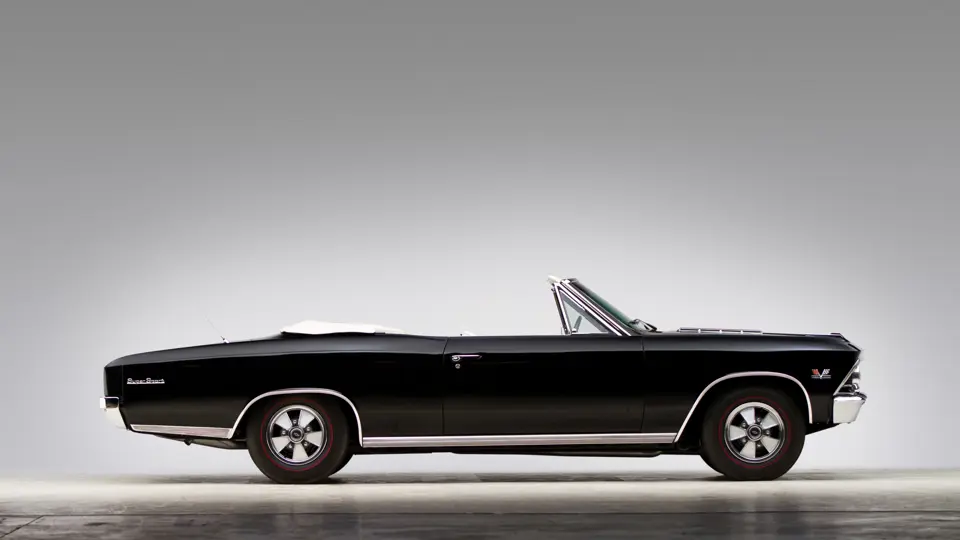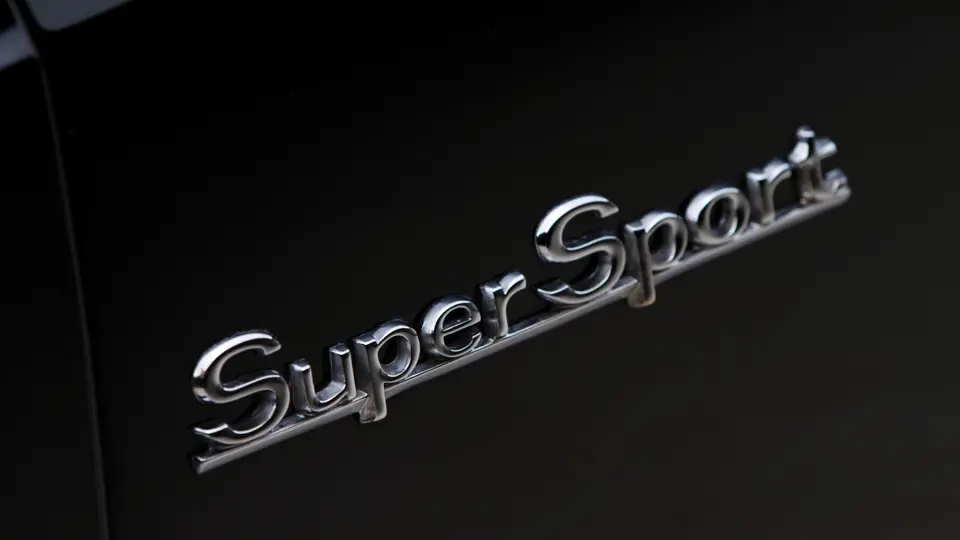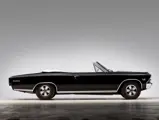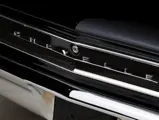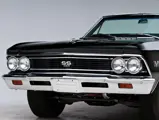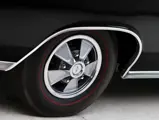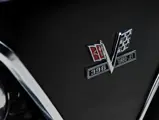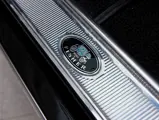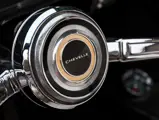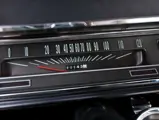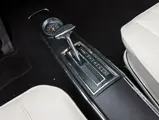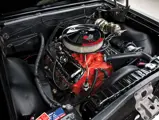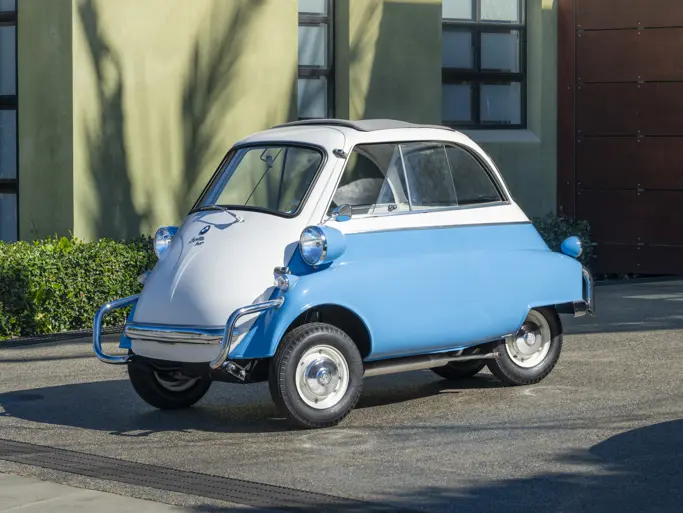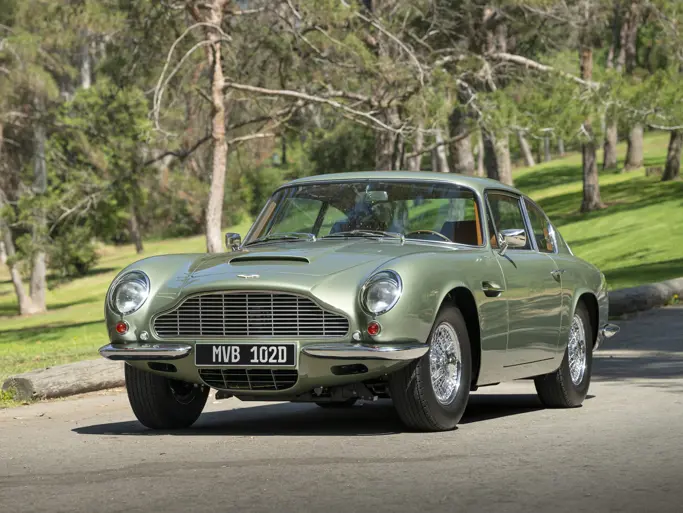An excellent, fully restored, numbers-matching example
300 bhp, 396.0 cu. in. OHV V-8 engine, two-speed Powerglide automatic transmission, coil spring independent front suspension, live rear axle trailing arm coil spring suspension, and four-wheel power hydraulic drum brakes. Wheelbase: 115.0 in.
After Pontiac’s 1964 GTO option created the muscle car, the rest of General Motors’ divisions wanted in. The recipe was pretty simple: put a big engine in an intermediate-size car and add enough panache to create an iconic model. Pontiac Chief Engineer John DeLorean and adman Jim Wangers achieved this with a Tempest powered by the big Pontiac’s 389-cubic inch engine. The package included some chassis upgrades and special GTO emblems and styling features. Most often, muscle cars also had upscale interiors, with bucket seats and extra instrumentation.
Chevrolet had the basic ingredient for a muscle car: the intermediate Chevelle introduced in 1964. From the beginning, Chevelle offered a Super Sport option for its hardtop coupe and convertible. This would serve as the upscale amenity part of a muscle car, but Chevy lacked an engine. The largest available in Chevelles was a 300 brake horsepower, 327-cubic inch V-8, somewhat below the muscle car threshold. Full-size Chevys offered a 409-cubic inch big block, but that engine was undergoing engineering changes that would result in the Mark IV series in 1965.
In 1966, it all came together. The new “Mark IV” Turbo Jet 396, an evolution of the Mk II “porcupine” 427 used in NASCAR racing, was made available in the Chevelle. A separate Chevelle SS series was created for sport coupes and convertibles so-equipped, which by nature also had the other SS equipment. Chevy’s muscle car had arrived.
Other SS ingredients included reinforced frames and revised front suspension with higher-rate springs, recalibrated shocks, and a thicker front stabilizer bar. There were also simulated hood scoops, red-stripe tires, bright trim moldings, and of course, SS badges. Three versions of the engine were available, the RPO L35 with 325 brake horsepower, the L34, a 360 brake horsepower unit, and the RPO L78, a 375 brake horsepower 396. Many enthusiasts felt the L34 engine was under-rated and deliberated advertising below its actual horsepower, because otherwise it might provide competition for the Corvette.
This 1966 Chevelle Malibu has the L34 360 brake horsepower 396. A matching-numbers car, it is equipped with power steering, power brakes, a Powerglide transmission, windshield washers, seat belts, an AM radio, bucket seats with console, a console clock, and a steering column-mounted tachometer.
Painted black, it has a white vinyl interior and a white vinyl top with matching boot cover. The floor carpet is black. The body, paint, and brightwork are all in excellent condition. Underneath, the car is spotless, painted black throughout and nicely detailed. The engine compartment is clean and properly appointed, with factory chrome valve covers and an air cleaner adding some accent to the orange-red 396. Steel wheels with five-bolt full-wheel covers sport Firestone Super Belt red-line tires. It is a thoroughly well-detailed example that has the benefits of having a very comprehensive and professional restoration.
Although seldom regarded as a GTO competitor, the SS396 was every bit its corporate cousin’s equal. The 389-cubic inch GTO came in 333 and 360 brake horsepower versions, entirely on par with the 325, 360, and 375 brake horsepower SS396. Indeed, Chevrolet did have a muscle car, and this is a prime example.





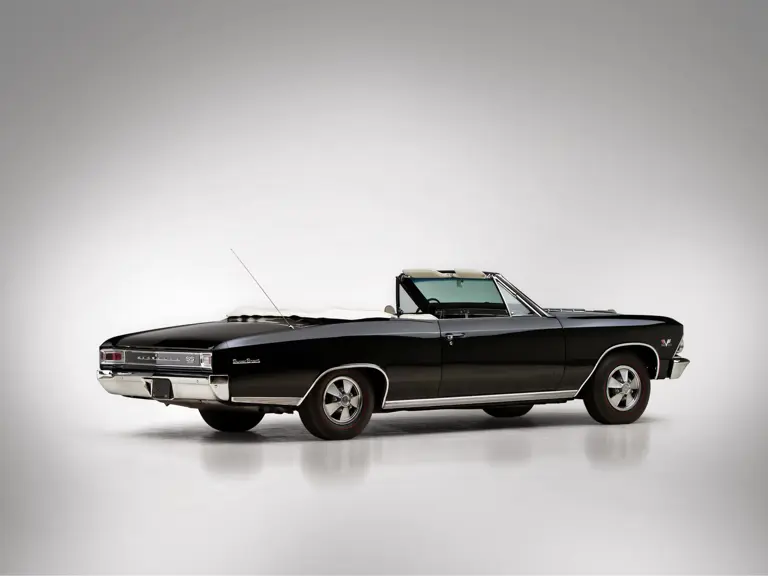
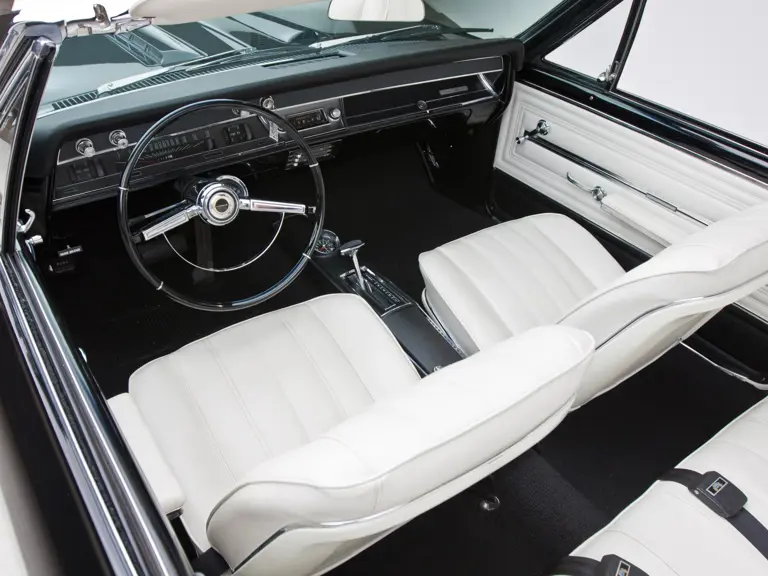
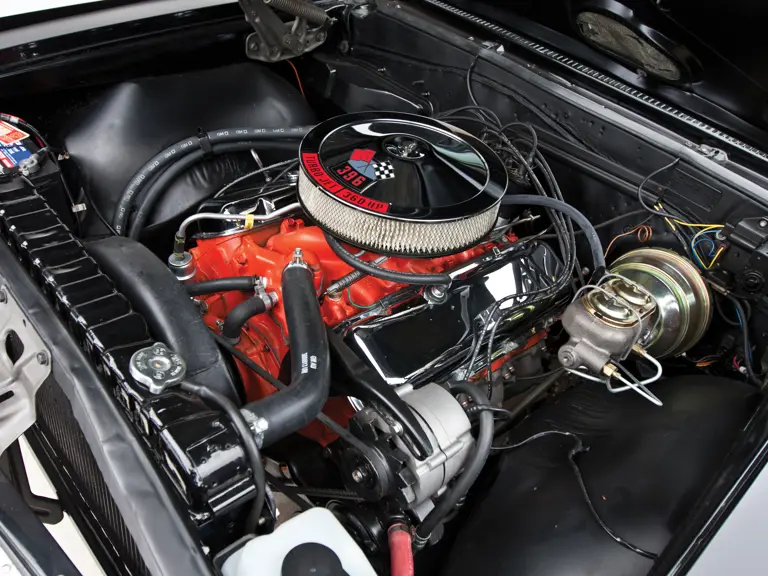
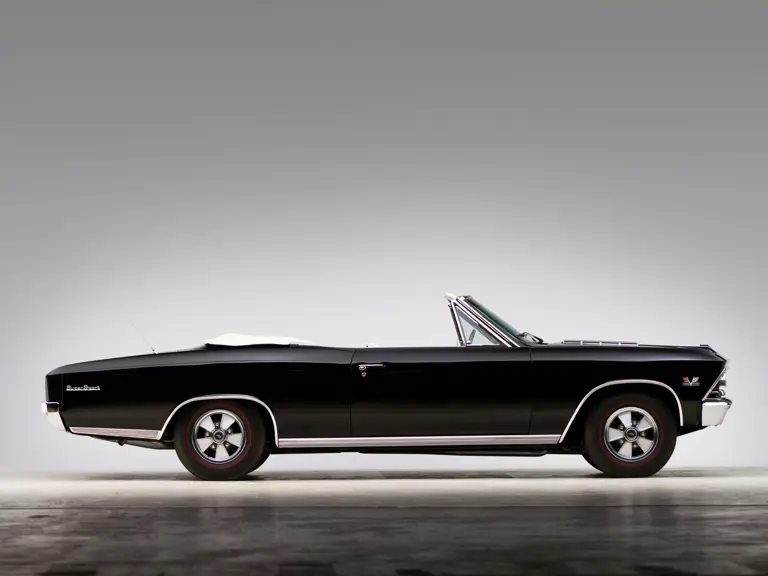
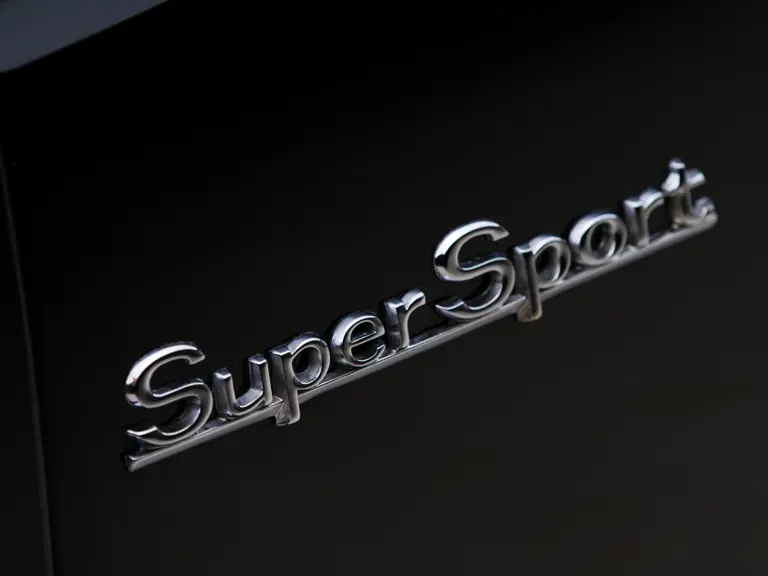
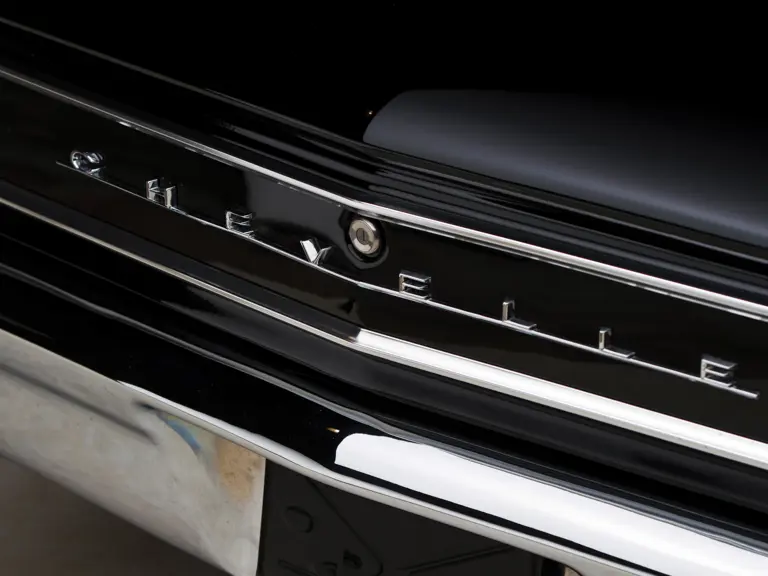
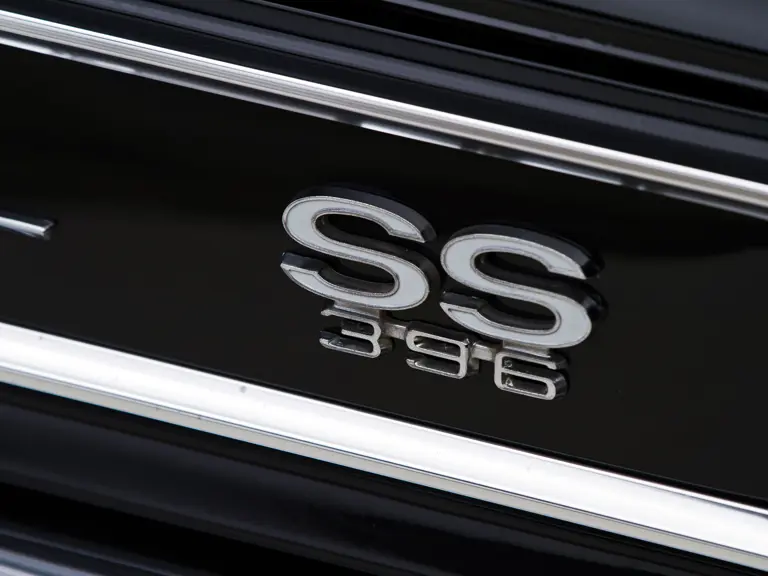
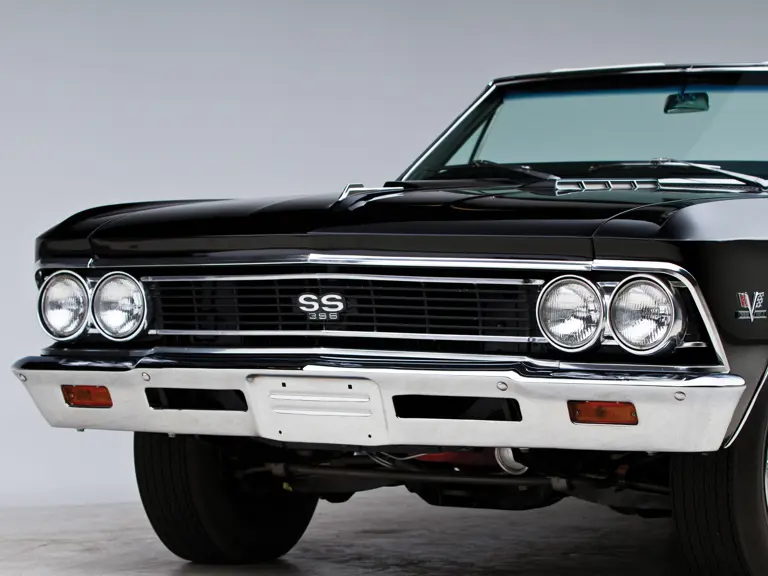
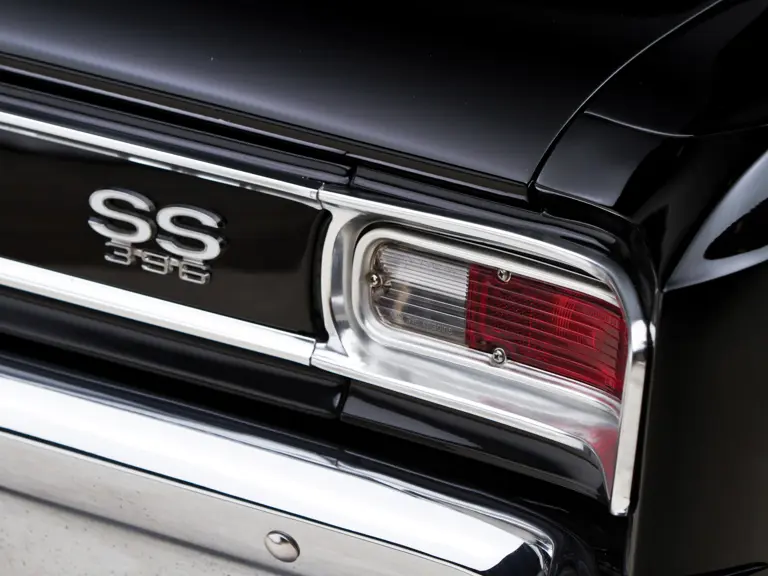
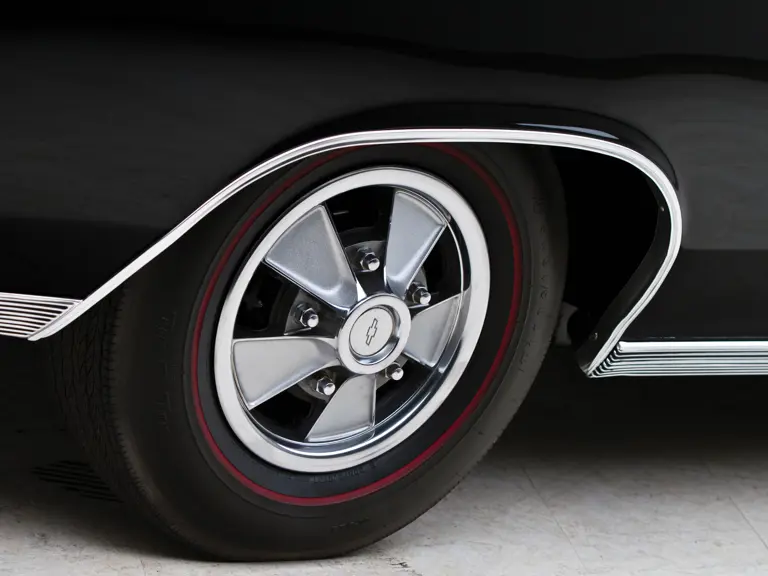
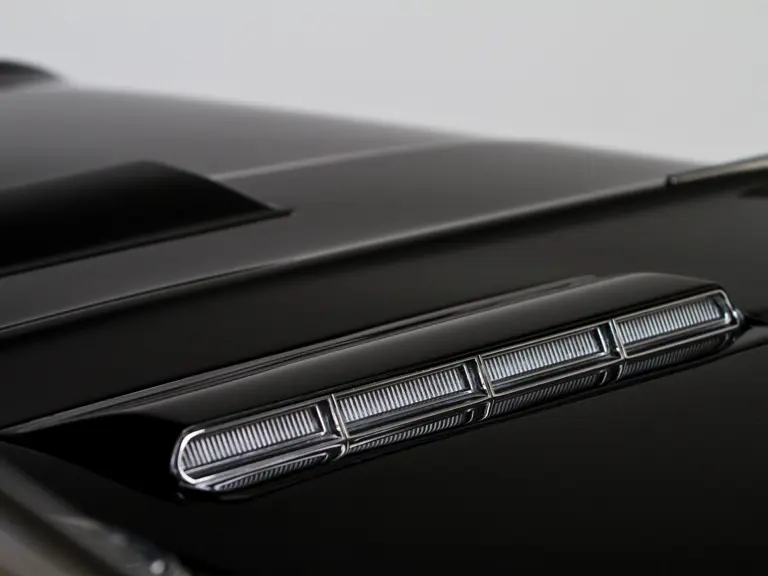
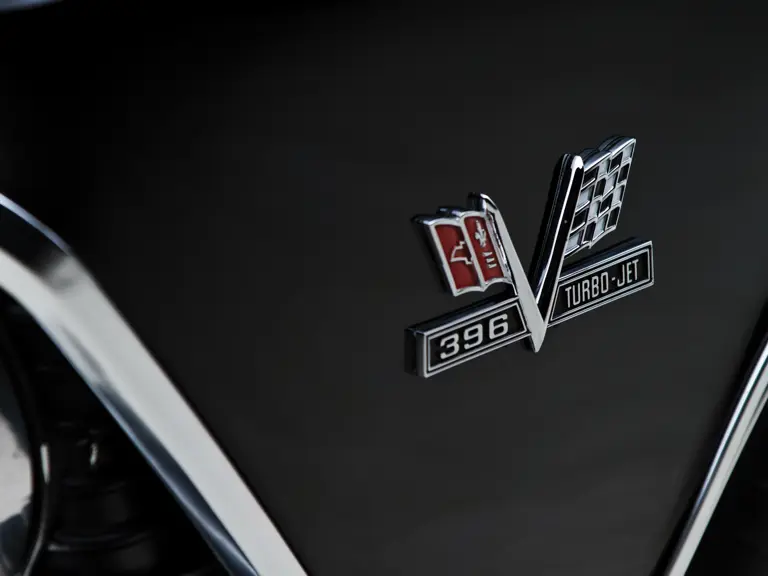
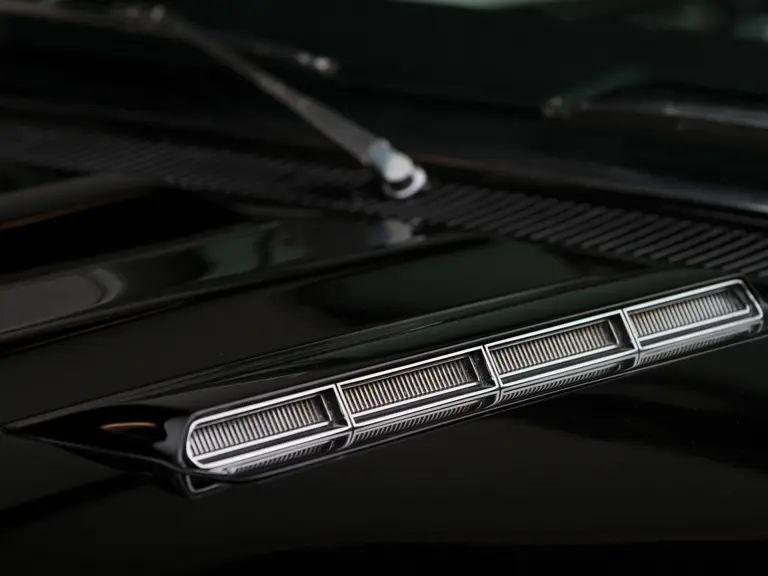
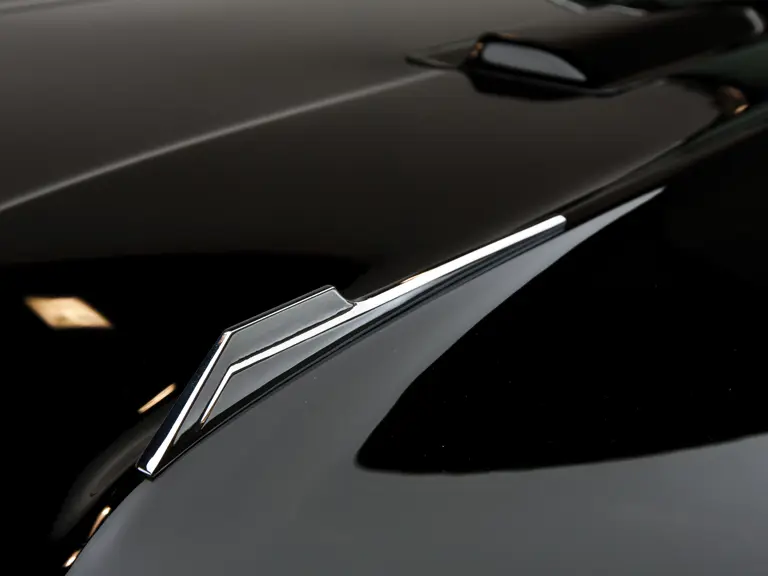
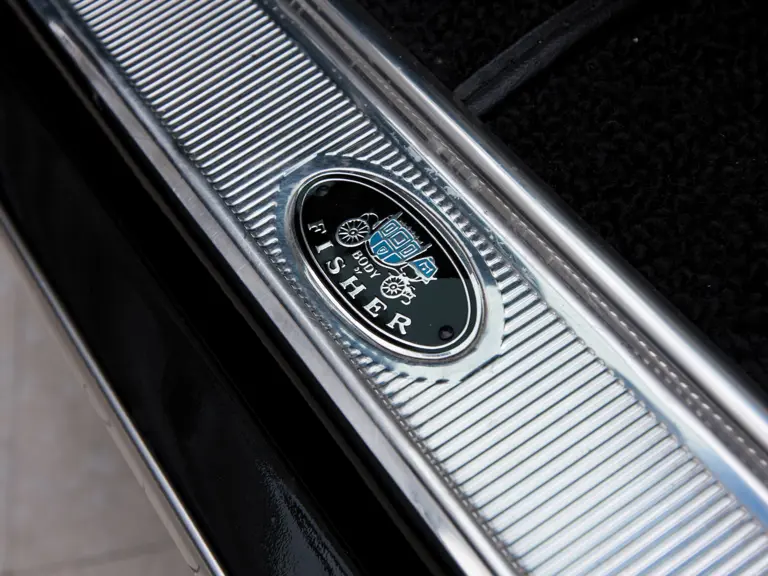
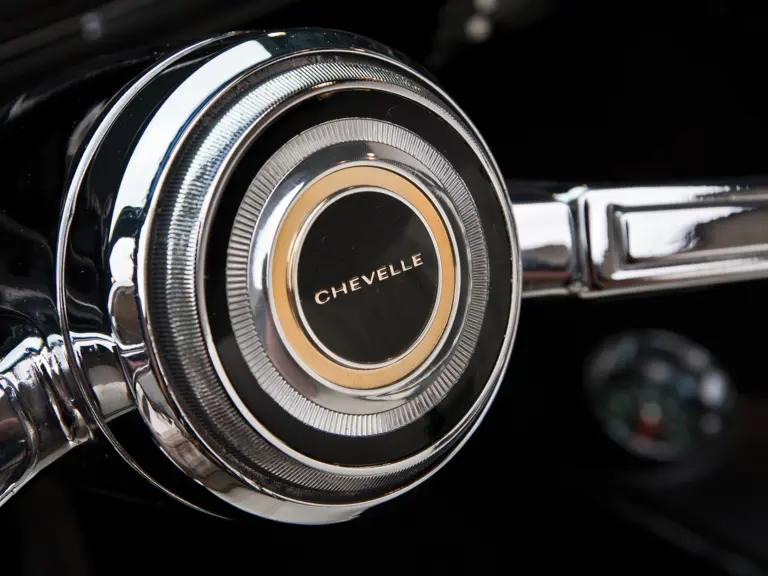
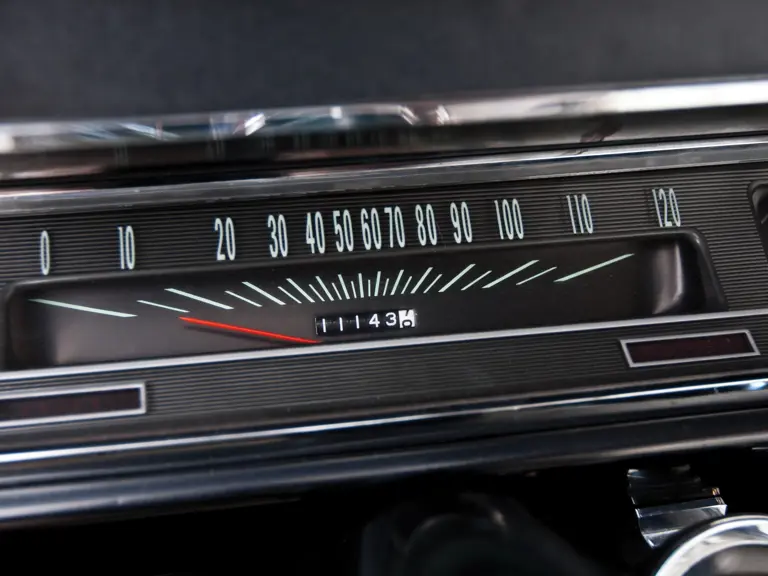
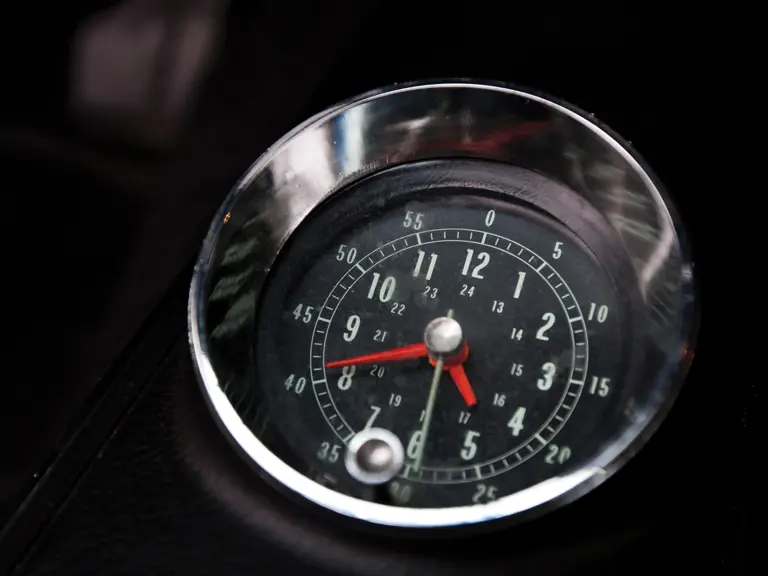
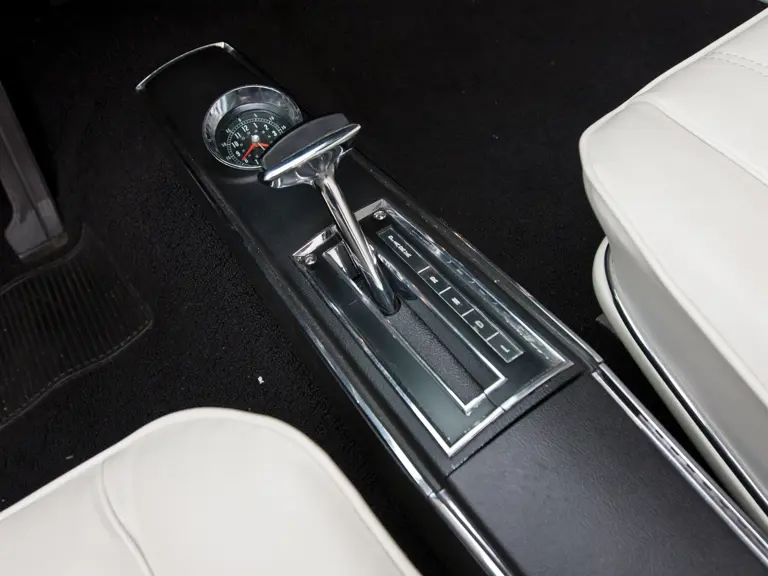
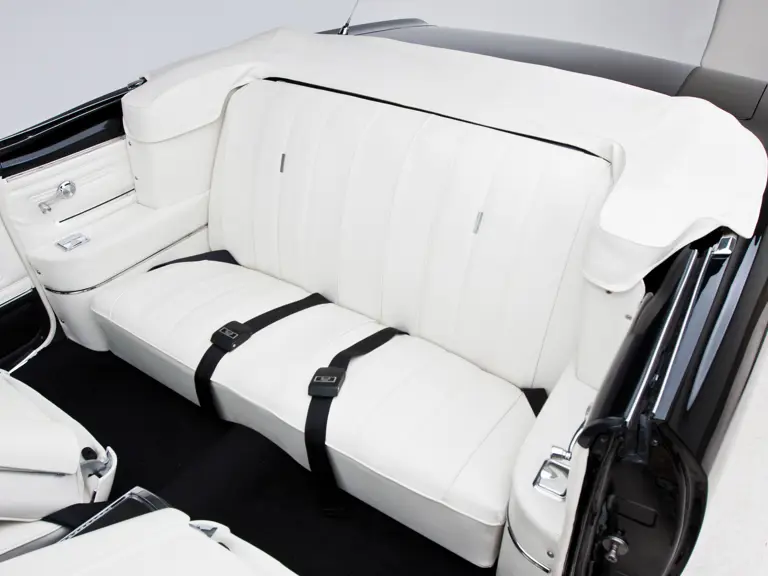
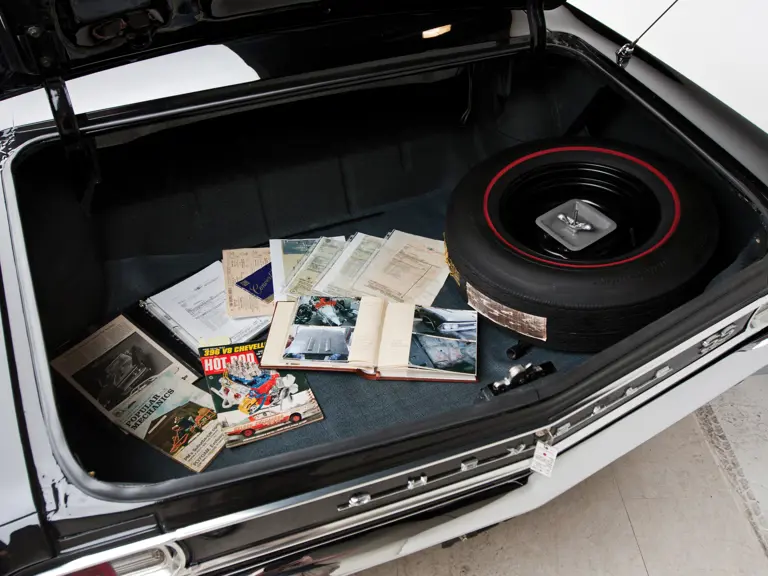
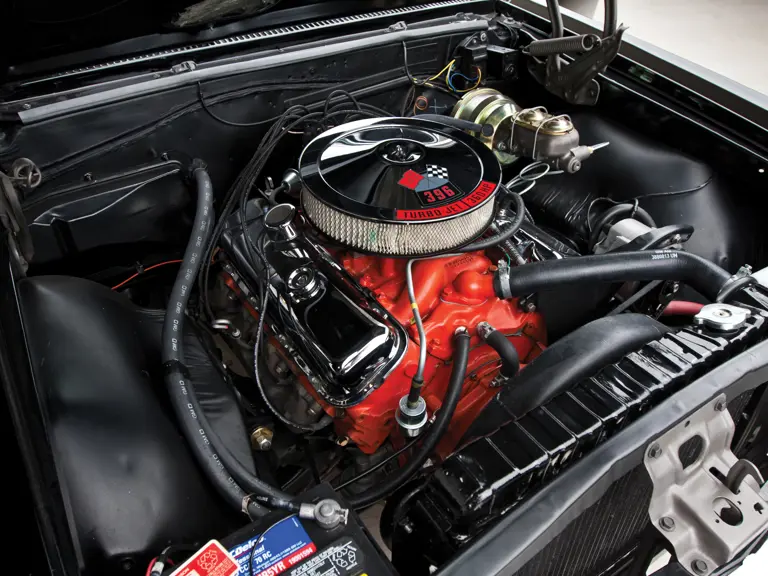
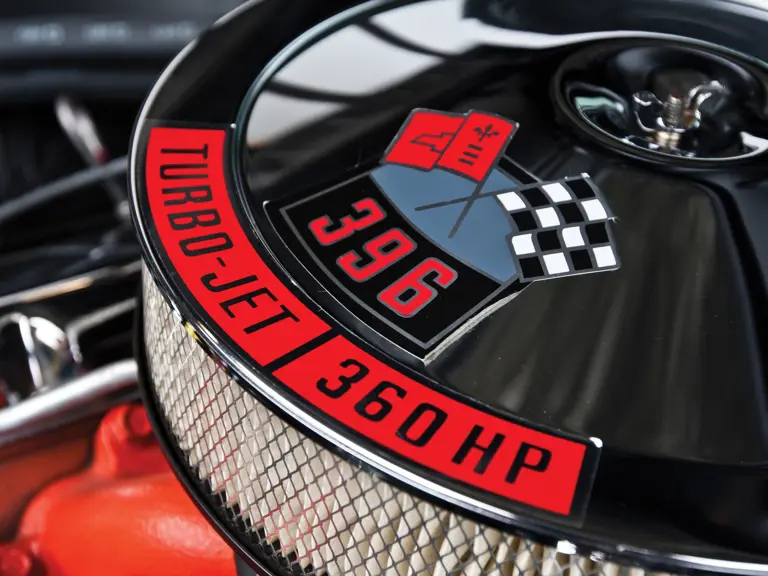
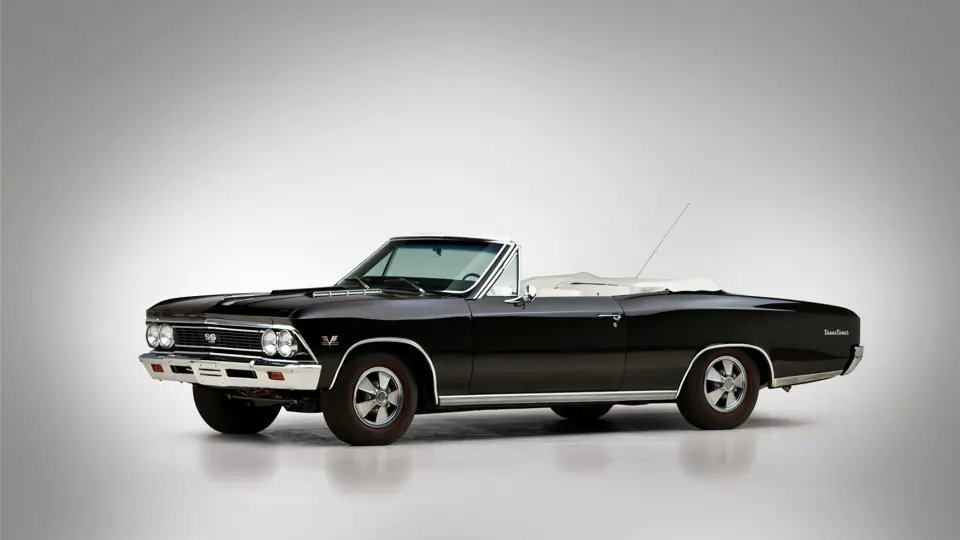
 | North Palm Beach, Florida
| North Palm Beach, Florida
